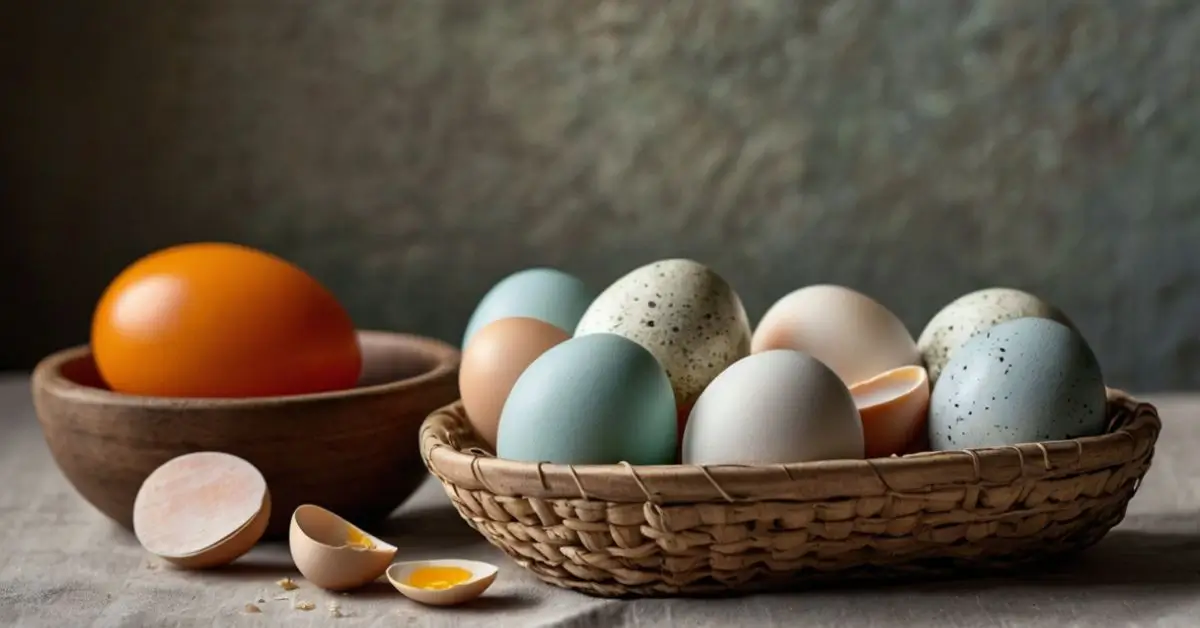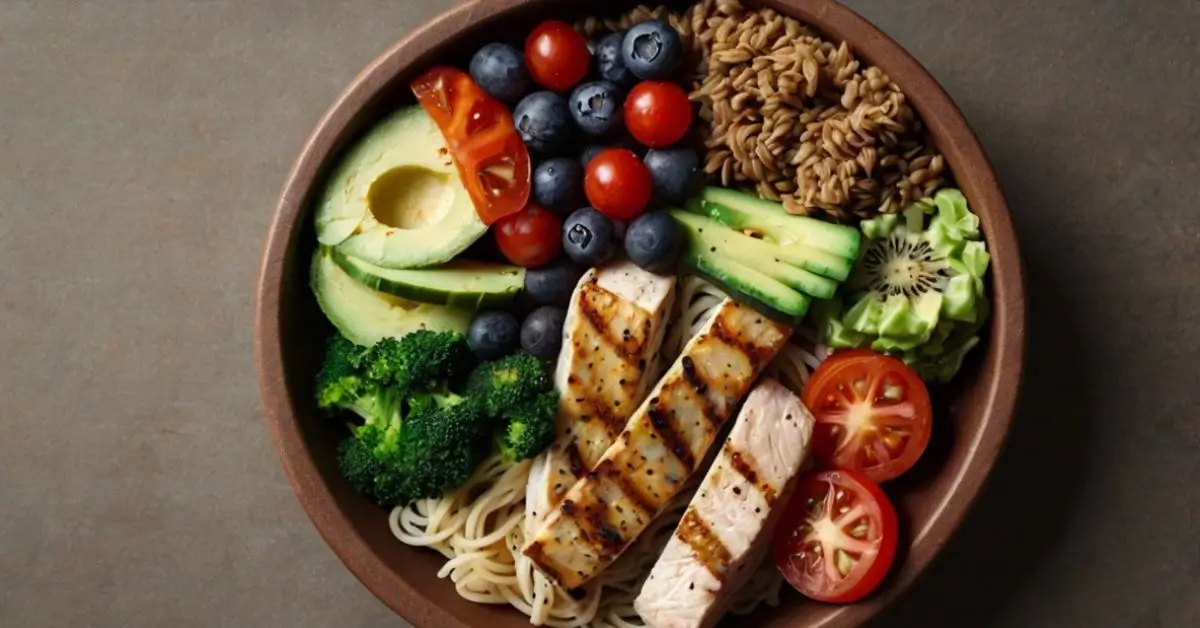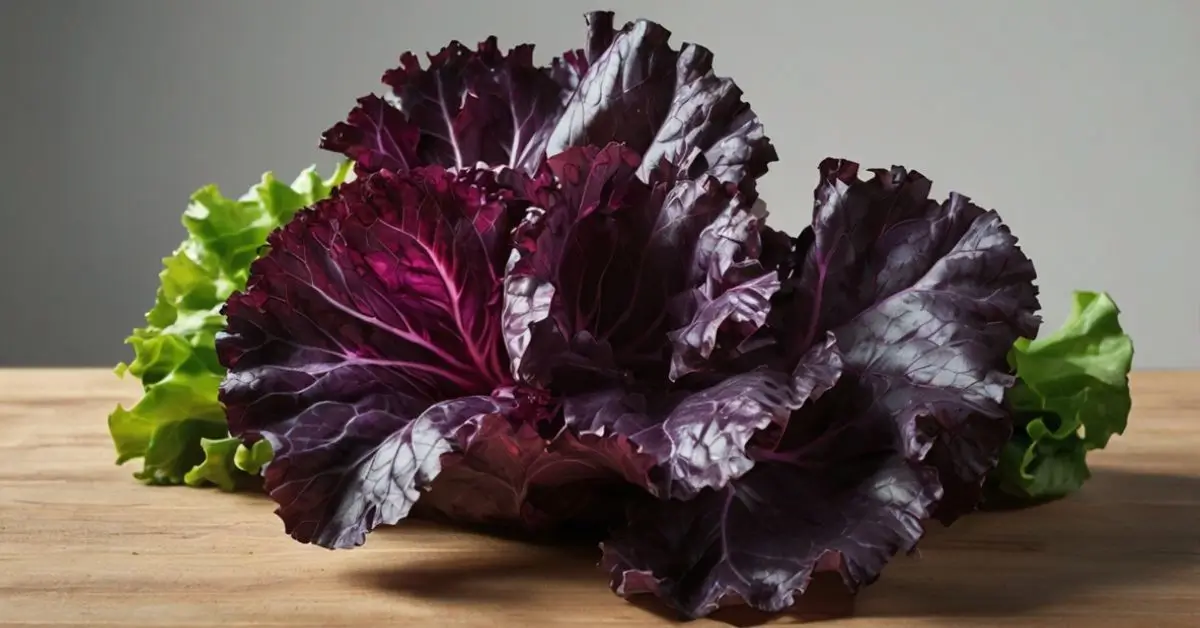HEALTHY DIET
Arbonne 30 Days to Healthy Living

Arbonne 30 Days to Healthy Living is a popular wellness program designed to reboot your body, mind, and lifestyle. Leveraging clean eating principles and plant-based nutrition, this 30-day system supports holistic wellness with a structured plan and premium-quality products. If you’re seeking to improve your energy, gut health, and overall wellness without resorting to crash diets or harmful shortcuts, this program offers a thoughtful and sustainable solution.
What Is Arbonne 30 Days to Healthy Living?
The Arbonne 30 Days to Healthy Living program is more than just a diet—it’s a full lifestyle reset. Focused on cleansing, replenishing, and rebalancing your system, it provides daily routines that blend clean eating with scientifically formulated Arbonne supplements. The philosophy centers on eliminating common allergens and toxins, such as dairy, gluten, soy, caffeine, and added sugars, and replacing them with nutrient-rich, plant-based alternatives.
Unlike many commercial weight-loss programs, this system emphasizes long-term health over short-term results. As a result, users often report improved digestion, better sleep, reduced cravings, and enhanced mental clarity.
Components of the Arbonne 30 Days to Healthy Living Program
The program includes several curated products and guidance for meal planning, hydration, and mindfulness. Here are the core components:
Meal Replacement Shakes
Arbonne’s protein shakes are gluten-free, dairy-free, and powered by pea protein. These are intended to replace two meals daily and are enriched with essential vitamins and minerals.
Digestive Support
Products like GutHealth Digestion & Microbiome Support and CleanTox Herbal Detox Tea play a key role. They help support digestion, reduce bloating, and promote a healthy gut environment.
Energy Boosting Supplements
The program replaces caffeine with Fizz Sticks, which offer a natural energy lift from guarana and green tea extract.
Meal Plans and Recipes
Participants receive comprehensive guides filled with anti-inflammatory meal suggestions, shopping lists, and prep tips.
Community Support
Online groups, coaching, and accountability tools help ensure you stay committed throughout the 30 days.
Key Benefits of Arbonne 30 Days to Healthy Living
Improved Digestive Health
Removing allergens and toxins results in better digestion and nutrient absorption. Users report significantly less bloating and more regular bowel movements.
Weight Management
Thanks to portion control and healthy food swaps, this program promotes natural weight loss. It doesn’t involve starvation but encourages clean, balanced meals.
Clearer Skin and More Energy
The nutrient-dense shakes and detoxifying herbal tea often improve skin clarity. The absence of processed foods and sugar spikes helps in maintaining energy throughout the day.
Better Sleep and Mood
Many participants claim they sleep more deeply and wake up more refreshed. Clean eating can positively influence mental clarity and emotional stability.
Comparison Table: Arbonne 30 Days to Healthy Living vs. Other Wellness Programs
| Feature | Arbonne 30 Days to Healthy Living | Whole30 | Keto Diet | Intermittent Fasting | Paleo Diet |
| Cost | Moderate to High | Low | Moderate | Low | Moderate |
| Efficiency | High when followed consistently | Moderate | High (short-term) | Moderate | High |
| Ease of Use | Structured with guides provided | Complex meal prep | Requires tracking | Easy to follow | Moderate complexity |
| Supplement Support | Yes (shakes, tea, Fizz sticks) | No | Often optional | No | Optional |
| Long-Term Viability | High | Moderate | Low | Moderate | Moderate to High |
This table demonstrates that Arbonne 30 Days to Healthy Living offers a balanced and structured approach compared to other dietary plans, particularly for those who prefer guided support and product-based enhancements.
How the Program Works: A Step-by-Step Guide
Step 1: Preparation
Before starting, you’ll clear your kitchen of processed foods and prepare your mind for commitment. You’ll receive digital tools including a prep checklist and shopping list.
Step 2: Product Integration
Introduce two shakes per day and use supplements like the GutHealth Digestion & Microbiome Support, Fizz Sticks, and detox tea to assist in gut cleansing and energy management.
Step 3: Daily Routine
Each day includes:
- Two protein shakes
- One clean, whole food meal
- Healthy snacks (as needed)
- Hydration (at least 64 oz of water)
- Herbal detox tea
- Exercise and mindfulness practices
Step 4: Weekly Adjustments
You’ll receive encouragement to reflect on physical and emotional changes. Weekly check-ins are encouraged through Arbonne consultants or online support groups.
Scientific Backing and Industry Standards
Arbonne’s products comply with European Union standards, which ban over 1,400 ingredients in cosmetic and nutrition products—far more stringent than U.S. regulations. The company also maintains vegan, gluten-free, and non-GMO certifications for most products.
Registered dietitians and wellness coaches often note the importance of eliminating inflammatory foods for overall health. As Dr. Mark Hyman, functional medicine expert, emphasizes:
“Food isn’t just calories; it’s information. It talks to your DNA and tells it what to do.”
The Arbonne 30 Days to Healthy Living plan reflects this philosophy by focusing on clean, non-inflammatory nutrition.
Who Should Try Arbonne 30 Days to Healthy Living?
This program is ideal for:
- Individuals struggling with digestive issues
- People seeking healthy weight loss
- Those experiencing low energy or brain fog
- Anyone wanting to transition into a cleaner lifestyle
It’s not intended for:
- Pregnant or breastfeeding women (unless approved by a physician)
- Individuals on specific medications
- Those seeking extreme or rapid weight loss
How to Maximize Your Results
Focus on Whole Foods
Even though shakes are provided, incorporating a variety of whole foods—vegetables, lean proteins, healthy fats—will provide lasting benefits.
Stay Consistent
Consistency is key. Skipping shakes or supplements can hinder your progress and results.
Practice Mindfulness
Stress management is part of healthy living. The program encourages journaling, meditation, and adequate sleep.
Hydrate Religiously
Hydration supports detox and improves overall energy. Aim for 2–3 liters of water daily, alongside the detox tea.
Common Mistakes to Avoid
- Not Reading the Guides: The plan is rich with resources—don’t ignore them.
- Skipping Meals: This isn’t a starvation diet. Regular intake is crucial.
- Overeating Healthy Foods: Even clean foods can sabotage progress in excess.
- Ignoring Sleep & Stress: Health is holistic. Ignoring rest or stress can slow down your progress.
Conclusion
Arbonne 30 Days to Healthy Living is a thoughtfully designed wellness journey tailored to real, lasting lifestyle change. From its plant-powered nutrition to its guided daily structure, it offers one of the most supportive and effective systems available for clean living. Starting this program could mean the beginning of better digestion, balanced weight, sustained energy, and improved emotional well-being. If you’re ready to reset your health and reboot your habits, this plan provides an accessible yet powerful path toward wellness.
FAQs
What can I eat on Arbonne 30 Days to Healthy Living?
You can eat whole, clean foods such as lean proteins, vegetables, fruits, legumes, and healthy fats. Dairy, gluten, sugar, soy, alcohol, and caffeine are eliminated.
Do I need to exercise during the 30 days?
Light to moderate physical activity is encouraged but not mandatory. Walking, yoga, or stretching supports detox and wellness.
Can I drink coffee during the program?
Caffeine is discouraged. Instead, the program includes Fizz Sticks, which offer a gentler energy boost without the crash.
How much weight can I expect to lose?
Results vary. Most people lose between 5 to 15 pounds depending on their starting weight, activity level, and adherence to the plan.
Are there any side effects during detox?
Some participants experience mild fatigue or headaches in the first few days as the body adjusts. Drinking plenty of water helps ease symptoms.
Can I do the program more than once?
Yes, many participants repeat it quarterly or bi-annually. It can also be adapted into a long-term healthy lifestyle.
HEALTHY DIET
Duck Egg: A Powerhouse Superfood for a Healthy Diet

When it comes to making smarter food choices, the duck egg stands out as a nutrient-rich option that supports a healthy diet. Often overshadowed by the common chicken egg, this larger alternative delivers superior nutritional benefits, making it a valuable addition to any wellness-focused eating plan.
Why Duck Eggs Deserve a Spot in Your Healthy Diet
If you’re committed to clean eating or aiming to improve your overall well-being, this egg variety provides a unique edge. It contains higher levels of essential nutrients and is especially beneficial for people on high-protein, low-carb, or ketogenic diets. With its rich taste and impressive vitamin profile, this food can elevate your meals both nutritionally and culinarily.
Nutritional Profile: What’s Inside?
They are naturally packed with nutrients that contribute to energy, metabolism, and immune system strength. A typical serving includes:
- Calories: Approximately 135
- Protein: 9–10 grams
- Healthy fats: 10–12 grams, including omega-3s
- Cholesterol: Higher than chicken eggs, but mainly dietary
- Vitamins: Rich in B12, A, D, and E
- Minerals: High in selenium, iron, and zinc
These components support brain health, cellular repair, hormone balance, and daily energy needs.
Key Health Benefits
Enhances Muscle Growth and Recovery
Thanks to its high-quality protein, this egg supports tissue repair and muscle development. Athletes and active individuals benefit from the amino acid composition, which assists in recovery and performance.
Promotes Brain Health
The presence of choline, along with vitamins B12 and D, boosts neurological function and memory retention. For professionals, students, or older adults, this can mean better focus and cognitive clarity.
Great for Eye and Skin Health
These eggs contain antioxidants like lutein and zeaxanthin, which protect eyes from light-induced damage. They also promote radiant skin through vitamins A and E, making them a great choice for holistic wellness.
Ideal for Low-Carb Dieters
With negligible carbohydrates and high fat content, they are perfect for ketogenic or carb-conscious diets. Their richness helps reduce cravings and keeps you fuller for longer, assisting in weight control.
A Potential Alternative for Sensitive Individuals
Some people with sensitivities to chicken eggs find this variety easier to digest due to its different protein makeup. This makes them a viable alternative for those managing mild dietary allergies.
Duck Egg vs. Chicken Egg: A Nutrient Comparison
| Feature | Duck Egg | Chicken Egg |
| Cost | Slightly more expensive | More affordable |
| Nutrient Density | Higher protein and vitamin content | Standard protein and nutrients |
| Taste Profile | Richer and creamier | Mild and familiar |
| Culinary Use | Excellent for baking and gourmet dishes | Versatile for daily recipes |
| Satiety | Keeps you full longer | Less filling per egg |
This table shows why health-conscious eaters often consider upgrading their breakfast or snacks with this nutrient-dense egg.
Creative Ways to Add Duck Eggs to Your Meals
Breakfast Options
Replace chicken eggs in your morning scramble or omelet for a richer flavor and more nutrition. Paired with greens and whole grains, this makes for a power-packed start to the day.
Midday Energy Boost
Try boiled or poached duck eggs in salads, wraps, or rice bowls. They add texture, satiety, and nutrition to any lunch.
High-Protein Snacks
Hard-boiled versions can be enjoyed on their own or with hummus, olives, or avocado for a balanced, satisfying mini-meal.
Baked Goods
Bakers love them for their higher fat and protein content, which produces fluffier cakes, richer brownies, and better structure in pastries.
Gourmet Dishes
Chefs around the world use these eggs to elevate dishes like carbonara, soufflés, and custards. They add a distinctive taste that enhances fine dining experiences.
Things to Keep in Mind
Cholesterol Concerns
Yes, they are high in cholesterol. But current nutritional science shows dietary cholesterol doesn’t affect blood cholesterol levels as much as once believed. That said, moderation is key, especially for people with specific heart health conditions.
Food Safety
Like all animal products, proper handling and storage are essential. Ensure they come from a clean source and keep them refrigerated.
Allergies and Tolerances
Though some people find them easier to digest than chicken eggs, introduce them slowly if you’ve had egg allergies before. Always consult a medical expert if you’re unsure.
A Sustainable and Ethical Choice
Duck farming is often more environmentally friendly than chicken farming. Ducks require less intensive feed and are more resistant to disease. If sourced responsibly, these eggs can align with eco-conscious food values, contributing to a sustainable food system.
Choosing pasture-raised or local sources adds to their health appeal. These options tend to offer better nutrient content and support animal welfare standards.
What Experts Say About Incorporating Duck Eggs
Many health professionals agree that diversifying your food intake is vital for optimal health. This particular egg supports that diversity. As part of a balanced plate that includes vegetables, fiber-rich foods, and lean proteins, these eggs can help improve diet quality and nutrient absorption.
Nutritionists often recommend rotating different protein sources, and this option brings variety without compromising on benefits.
Who Should Consider Adding These Eggs?
- Fitness Enthusiasts – for protein and muscle support
- Busy Adults – for all-day energy and mental clarity
- Students – for memory and cognitive function
- Elderly Individuals – for bone and brain health
- Anyone on a Low-Carb Diet – for healthy fat intake
This food fits seamlessly into a range of healthy lifestyles and dietary goals.
Conclusion
The duck egg is a nutritional gem that deserves more recognition. Whether you’re baking, meal prepping, or simply upgrading your daily protein intake, this food offers a high-impact way to enhance your diet. Its rich nutrients, versatile use, and health-boosting properties make it an excellent fit for those striving to eat better and live stronger.
FAQs
Are duck eggs healthier than chicken eggs?
They contain more protein, vitamins, and minerals, making them more nutrient-dense. They’re ideal for people with higher dietary needs.
How many eggs can I eat per week?
For most healthy adults, three to five per week is a reasonable intake. It depends on your overall diet and cholesterol management.
Do duck eggs help with weight loss?
Yes. Their high protein and fat content keeps you full longer, which helps control calorie intake and reduce cravings.
What do these eggs taste like?
They have a richer, creamier flavor and slightly denser texture. Many people prefer them for baking and gourmet cooking.
Can I use these eggs in recipes that call for chicken eggs?
Absolutely. Just note that one duck egg is usually equivalent to about 1.5 chicken eggs in volume, so adjust recipes accordingly.
Are duck eggs safe for kids?
Yes, if cooked properly and introduced gradually. They offer valuable nutrients for growing bodies and brains.
HEALTHY DIET
Favorite Foods That Make Perfect Cheat Meals

When it comes to maintaining a healthy lifestyle, identifying your favorite foods that can double as smart cheat meals is essential for sustaining long-term results. Cheat meals aren’t about completely throwing your nutrition plan out the window; instead, they’re an opportunity to enjoy satisfying, flavorful foods without derailing your progress. In this article, we’ll explore how to enjoy your favorite indulgences mindfully, choose smarter cheat options, and make dietary success both delicious and achievable.
Why Cheat Meals Matter in a Sustainable Diet
The Psychology Behind Cheat Meals
Integrating cheat meals into a structured eating plan can support psychological and emotional well-being. Constantly restricting yourself from your favorite foods can lead to burnout or binge eating. Instead, planned indulgences help curb cravings, increase adherence to healthy routines, and even reset metabolic markers when done correctly.
Balancing Pleasure and Nutrition
Enjoying cheat meals made of your favorite foods doesn’t mean consuming processed junk. It’s about crafting indulgences that feel rewarding but still align with your dietary goals. This can include making homemade versions of traditional comfort foods using cleaner ingredients, proper portioning, and mindful timing.
Characteristics of Diet-Friendly Cheat Meals
Nutrient-Dense Yet Satisfying
The key to cheat meals that won’t sabotage your progress lies in nutrient density. Choose favorites that offer a blend of protein, healthy fats, and fiber to keep you full and energized.
Portion Control Is Everything
It’s not just what you eat—it’s how much. Instead of devouring an entire pizza, opt for two slices topped with veggies and lean protein. The trick is to indulge without overindulging.
Timing Plays a Role
Consuming a cheat meal post-workout or earlier in the day allows your body to better utilize the added calories. It also provides time to burn off any surplus energy throughout the day.
Top Favorite Foods That Work as Healthy Cheat Meals
Let’s dive into a list of common favorite foods that can be enjoyed guilt-free when prepared smartly. These options blend flavor, nutrition, and indulgence into meals that support your goals.
Pizza – A Customizable Classic
Pizza ranks high among universally loved favorites. Fortunately, you can make it work for your diet.
- Use whole grain or cauliflower crusts
- Add lean protein like grilled chicken
- Load up on fiber-rich vegetables
- Limit cheese to one layer
Burgers – Reinvented for Fitness
Burgers can be calorie bombs or protein-packed wins—it’s all in the preparation.
- Swap out white buns for whole wheat or lettuce wraps
- Choose lean meats (turkey, bison, or grilled chicken)
- Add avocado or egg for healthy fats
Tacos – Versatile and Satisfying
Tacos are endlessly customizable and can include a wide range of whole-food ingredients.
- Opt for soft corn tortillas or lettuce shells
- Include grilled shrimp, chicken, or tofu
- Use Greek yogurt instead of sour cream
Ice Cream – Smarter Frozen Delights
Yes, even ice cream can be part of a healthy cheat strategy.
- Choose protein-enriched or low-calorie brands
- Make your own using bananas and almond milk
- Add nuts or berries for texture and fiber
Pasta – Comfort with a Twist
Pasta is one of the most beloved favorite foods and, with a few swaps, it’s perfect for cheat days.
- Use chickpea or lentil pasta for added protein
- Toss with olive oil, lean meat, and greens
- Limit cream sauces and opt for tomato-based ones
Comparison Table: Favorite Foods as Guilt-Free Cheat Meals
| Favorite Food | Cost | Efficiency | Ease of Use | Scalability | Benefits |
| Pizza | Moderate | High | Easy (customizable) | Serves groups | High in protein & fiber (with smart toppings) |
| Burgers | Moderate | Medium | Moderate (requires cooking) | Single/Batch | Lean protein & healthy fats |
| Tacos | Low | High | Very Easy | Easily scalable | Low-carb options, fiber-rich |
| Ice Cream | Low | Medium | Very Easy | Individual servings | Treat with protein & calcium options |
| Pasta | Moderate | High | Easy | Serves many | Comfort food with protein twists |
Smart Swaps to Transform Your Favorite Foods
Making simple ingredient changes can turn calorie-heavy dishes into nutrient-packed meals. Here are some ideas to upgrade your indulgences:
- Replace white flour with almond or oat flour
- Bake instead of deep fry
- Use Greek yogurt in place of cream
- Add fiber-rich sides like roasted veggies or salads
- Substitute sugar with natural sweeteners like stevia or honey
Building a Weekly Plan That Includes Favorite Foods
Create a Cheat Meal Schedule
Designate one to two meals a week where you enjoy your favorite foods in a controlled way. Having a plan prevents mindless overeating and gives you something to look forward to.
Use It as a Reward
Align your cheat meal with personal fitness milestones—like completing a workout streak or reaching a water intake goal. This helps you stay motivated and positive.
Track Your Progress
After your cheat meal, pay attention to how your body responds. If you feel bloated or tired, dial back. If you feel satisfied and energized, you’ve found the right balance.
Expert Insight: What Nutrition Coaches Recommend
Nutrition experts consistently emphasize that no single food ruins your diet. It’s the pattern and frequency that matter. They recommend the 80/20 rule: 80% nutrient-rich meals and 20% flexible choices. This approach includes favorite foods in moderation while preserving your health goals.
They also highlight the importance of mindfulness during indulgence. Eat slowly, savor the flavor, and stop when satisfied. This habit helps prevent overeating and promotes a healthy relationship with food.
Real-Life Examples of Balanced Indulgence
Fitness Enthusiasts
Many athletes incorporate cheat meals of their favorite foods, such as sushi rolls or gourmet burgers, into their routines. They use these meals to replenish glycogen and reset their metabolism.
Busy Professionals
Professionals juggling work and fitness often rely on meal prepping and save cheat meals for social outings. This balance allows them to enjoy celebrations without guilt.
Families with Kids
Families can turn weekend dinners into opportunities for enjoyable cheat meals—homemade pizzas or pasta nights with added veggies and protein keep both kids and adults happy and healthy.
Don’t Forget Hydration and Activity
A cheat meal becomes even more effective when paired with adequate hydration and movement. Drinking enough water aids digestion, while a light walk post-meal helps regulate blood sugar and prevent energy crashes.
Conclusion
There’s a common misconception that enjoying your favorite foods must mean sacrificing your fitness goals. The truth is, indulgence and discipline can coexist. With strategic planning, smarter ingredient choices, and proper portions, your beloved foods can enhance—not hinder—your wellness journey.
By building your meal plan around whole foods, tracking your reactions to different cheat meals, and aligning indulgences with your health goals, you create a sustainable and enjoyable relationship with eating.
FAQs
Can I eat my favorite foods every week without gaining weight?
Yes, if you plan your meals strategically. Incorporating cheat meals once or twice a week, while keeping your calorie intake balanced overall, can support weight maintenance and even boost your metabolism.
What are the best times to have a cheat meal?
The ideal time for a cheat meal is after intense physical activity, such as a workout. Your body is primed to utilize the calories for recovery and energy, minimizing fat storage.
How do I stop myself from binge eating on cheat days?
Stick to portion-controlled servings and savor your food slowly. Plan your cheat meal ahead of time, so it doesn’t turn into an unplanned binge. Keep the environment distraction-free to focus on your meal.
Are there specific foods to avoid even on cheat meals?
It’s best to limit ultra-processed foods with trans fats or excessive sugar. Opt for homemade or minimally processed versions of your favorite dishes to reduce harmful ingredients.
Can cheat meals boost my weight loss?
In some cases, yes. Occasional increases in calorie intake can reset your metabolism and prevent plateaus, especially if you’re on a calorie-restricted diet. They also help satisfy cravings and reduce the likelihood of overeating later.
How do I identify which favorite foods work best as cheat meals?
Choose foods that are filling, satisfying, and can be modified for better nutrition. If you feel energized and not bloated afterward, it’s a good sign that your chosen cheat meal is compatible with your goals.
HEALTHY DIET
Purple Lettuce: A Nutritious Twist to Your Greens

Purple lettuce is gaining attention among health-conscious consumers, chefs, and gardeners. With its striking color, crisp texture, and high nutritional value, this leafy vegetable is more than just a salad garnish. Its antioxidant-rich properties and visual appeal make it a smart, flavorful choice in modern kitchens.
What Is Purple Lettuce?
This vibrant leafy green gets its deep reddish-purple hue from anthocyanins—natural compounds also found in blueberries and red cabbage. These pigments aren’t just for show; they’re powerful antioxidants with health-supporting properties.
Several varieties fall under the this type of lettuce umbrella, including Red Romaine, Red Leaf, and Lollo Rosso. Though their colors and textures vary slightly, they all offer more than aesthetic value. Their bold flavors and nutrient density set them apart from conventional green lettuce.
Nutritional Profile and Health Benefits
Color often indicates nutrient content in plants, and this holds true for purple-hued vegetables. Purple lettuce is low in calories yet high in vital nutrients, including fiber, vitamins, and minerals.
Antioxidant Powerhouse
The anthocyanins responsible for its rich color are known to help combat oxidative stress in the body. Regular consumption of anthocyanin-rich foods can support heart health, reduce inflammation, and promote cellular repair.
Rich in Vitamins
This leafy green is an excellent source of vitamin A for vision and immune support, vitamin C for skin and healing, and vitamin K for bone and blood health.
Supports Digestive Health
High in dietary fiber, purple leaf lettuce promotes healthy digestion and may help regulate blood sugar and cholesterol levels.
Promotes Hydration
With over 90% water content, it’s also hydrating and refreshing—ideal for warmer climates or after workouts.
Popular Varieties of Purple Lettuce
Several types of lettuce carry a purple or red tinge, but the following are especially valued for their intense pigmentation and culinary use:
- Red Romaine: Tall, slightly bitter leaves with sturdy ribs.
- Lollo Rosso: Frilly and curly, great for visual contrast in dishes.
- Red Leaf: Mild, soft-textured leaves often found in salad mixes.
- Merlot: Very dark purple, nearly black leaves, packed with antioxidants.
- Red Oakleaf: Soft and nutty in flavor, ideal for fresh salads.
These varieties differ slightly in taste, color intensity, and texture, allowing for creative uses in culinary presentations.
Culinary Uses Beyond Salads
Though most people associate lettuce with salads, the deep tones and robust texture of purple varieties lend themselves to multiple culinary applications.
Sandwiches and Wraps
Use larger leaves as natural wraps or stack them in sandwiches for added crunch and nutrition.
Smoothies and Juices
For those who love blending leafy greens, this colorful option works well in green drinks. It pairs smoothly with apples, berries, and citrus.
Garnishes
Lollo Rosso and Merlot varieties are often used by chefs as edible decorations thanks to their dramatic appearance and texture.
Stir-Fry and Sautéing
While uncommon, lightly sautéing purple lettuce with garlic and olive oil can offer a new way to enjoy it—just avoid overcooking to preserve color and nutrients.
How to Grow Purple Lettuce at Home
Whether in a backyard garden or a windowsill container, this leafy green is relatively easy to cultivate, especially in cool climates.
Ideal Conditions
- Soil: Well-draining, loamy soil with neutral pH.
- Sunlight: Prefers full sun but tolerates partial shade.
- Water: Keep the soil evenly moist to prevent bitterness.
Planting and Care
Space seeds or transplants 6–12 inches apart and fertilize lightly during growth. Keep pests like aphids and snails in check using organic solutions.
Harvesting
You can begin harvesting baby leaves in 30 days or wait up to 60 days for full heads. Continuous harvesting encourages regrowth.
Comparison Table: Purple Lettuce vs. Green Lettuce
| Feature | Purple Lettuce | Green Lettuce |
| Color | Deep reddish or purplish tint | Light to dark green |
| Taste | Mild to slightly bitter | Mild and neutral |
| Antioxidants | High (anthocyanins) | Moderate (mostly chlorophyll) |
| Visual Appeal | Vibrant and bold | Standard |
| Nutrient Density | High | Average |
This table shows that the purple variety offers advantages in antioxidant content and aesthetic presentation.
Sustainability and Scalability
Whether you’re growing in small backyard plots or commercial-scale farms, this type of lettuce adapts well across settings.
- Efficient Growth Cycle: Quick to mature, often within 30–60 days.
- Resource Friendly: Requires minimal water and fertilizer inputs.
- Year-Round Viability: Can be grown in controlled environments for consistent supply.
These traits make it ideal for sustainable agriculture practices, including hydroponic and vertical farming.
Storage Tips for Maximum Freshness
To extend shelf life:
- Store unwashed in the fridge wrapped in a paper towel inside a breathable bag.
- Keep leaves dry to prevent spoilage.
- Use within a week for best taste and nutritional value.
Avoid storing near ethylene-producing fruits like apples, as it accelerates wilting.
Consumer Trends and Market Potential
As demand grows for visually appealing, nutrient-rich produce, this leafy vegetable stands out in both farmer’s markets and supermarkets. Its bold appearance makes it a favorite for food bloggers, chefs, and health influencers.
Retailers often feature it in spring mix blends or sell it as a specialty item. Its ability to meet both aesthetic and health-conscious demands positions it strongly in the evolving food market.
Cooking Tips from the Pros
Professional chefs and nutritionists alike appreciate the versatility of colorful lettuce varieties. Here are expert tips for maximizing taste and benefits:
- Balance bitterness with sweet ingredients like pear or beet.
- Add texture using roasted seeds, croutons, or crispy chickpeas.
- Dress lightly with vinaigrettes to avoid overpowering the leaf’s natural flavor.
- Pair with proteins such as grilled shrimp, tofu, or lean chicken for a full meal.
Using these techniques can turn a simple salad into a gourmet experience.
Is Purple Lettuce a Superfood?
While “superfood” is a marketing term, many health professionals argue that deeply pigmented vegetables deserve the label due to their dense nutrient profiles. This type of lettuce delivers vital nutrients, plant-based antioxidants, and hydration in a low-calorie package—ideal for detox, weight loss, and anti-aging diets.
Its combination of beauty, function, and nutrition justifies its growing popularity across multiple food and health sectors.
Conclusion
Purple lettuce stands out not just for its captivating color but for its substantial health benefits, ease of cultivation, and versatility in the kitchen. As people shift toward nutrient-dense, functional foods, this leafy green proves it deserves a permanent place on grocery lists and garden plots alike. Whether you enjoy it raw in salads, blended in smoothies, or creatively cooked, this type of lettuce offers an easy way to upgrade your meals and your health.
FAQs
What gives purple lettuce its color?
The rich color comes from anthocyanins, natural antioxidants that also offer health benefits like reducing inflammation and supporting heart health.
Is this type of lettuce healthier than green lettuce?
Yes, in many cases. The higher antioxidant levels and nutrient density offer added health benefits over traditional green lettuce varieties.
Can I grow purple lettuce indoors?
Absolutely. It thrives in containers on sunny windowsills or under grow lights, making it suitable for indoor gardens.
What dishes can I use this type of lettuce in?
Beyond salads, it’s great for wraps, sandwiches, smoothies, and even as a decorative garnish for elegant plating.
How should I store purple lettuce?
Keep it dry and unwashed in the refrigerator, preferably wrapped in paper towels and stored in a breathable container or bag.
Does this type of lettuce taste different?
Yes, it typically has a slightly more robust or bitter flavor compared to milder green types, which can add depth to dishes.
-

 GENERAL4 weeks ago
GENERAL4 weeks agoGary Brecka Supplements: Unlocking Peak Human Performance
-

 HEART TIPS4 weeks ago
HEART TIPS4 weeks agoTheralogix NeoQ10 Coenzyme Q10 Supplement – Heart Health
-

 GENERAL4 weeks ago
GENERAL4 weeks agoConversationsWithRina Relationships and Healthy Living
-

 GENERAL4 weeks ago
GENERAL4 weeks ago12 oz Coke Nutrition Facts: What’s Really Inside?
-

 BP & SUGAR4 weeks ago
BP & SUGAR4 weeks agoDiabetic Pedicure Near Me: Where Health Meets Comfort
-

 WORKOUTS4 weeks ago
WORKOUTS4 weeks agoButt Exercise Machine: Intelligent Exercises to Change Your Glutes
-

 HEART TIPS3 weeks ago
HEART TIPS3 weeks agoCommon Heart Home Health: Trusted Cardiac Care at Home
-

 GENERAL4 weeks ago
GENERAL4 weeks agoWaterless Skincare: The Future of Potent, Eco-Friendly Beauty
